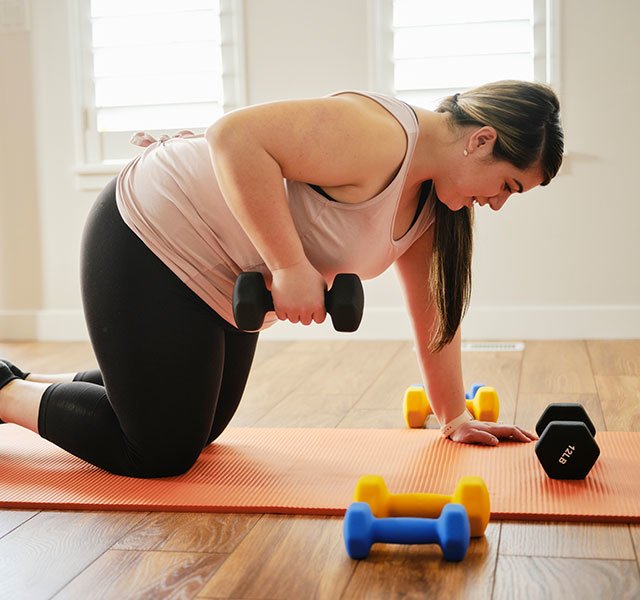Strength training plays a key role in any fitness program. Whether you sit at a desk most of the day or you're training for a marathon, some type of resistance or weight training is important for overall health and well-being.
Don't worry. You don't have to hit a weight room or purchase a complete set of dumbbells to get a full-body strength workout. You can use your own body weight or the props you have on hand at home.
Strength Training Explained
Strength training builds muscle, protects your bones and helps you maintain function well into your golden years. But the term "strength training" can be confusing. Does it mean lifting weights? Doing pushups? Or performing bicep curls with jugs of milk? As it turns out, all three qualify.
Strength training is an umbrella term for a variety of muscle-building activities, including:
- Weight training: Weight training is a type of strength training that uses weight bars, dumbbells or weight stacks to build muscle. The weight doesn't have to be heavy. You can lift 2-pound barbells. The idea is to use something outside of your own body to stress the muscles so they grow in response.
- Powerlifting: Sometimes called Olympic weightlifting, powerlifting is a strength sport that requires lifters to achieve maximal weight on three lifts: squat, bench press and dead lift.
- Resistance training: Any activity that increases muscle strength, tone or endurance falls into the category of resistance training. External resistance can come in the form of bands or tubing, dumbbells, weight bricks, water jugs or even your own body weight. The only requirement is that muscles contract with the activity.
Strength Training Basics
People often think about strength training as something that happens in a gym, usually with metal weights. But basic strength training can be as simple as using your own body weight to create resistance. The key is making sure you align your strength training routine to your particular fitness goals.
If you're a runner, that might mean doing squats, pushups and sit-ups for 20 minutes. But if you're a wrestler, it might mean bench pressing 300 pounds.
No matter your goals, make sure you pay attention to three things when you embark on a strength training routine:
- Function: You have to achieve a certain level of strength and fitness before you can do strength training exercises correctly. For example, if you don't have sufficient core strength, you can't perform a pushup with proper form.
- Fitness: Fitness develops in response to challenges. Instead of sticking with just weights or just body weight resistance, switch things up. Use dumbbells. Try a bench press. Create a circuit routine with pushups, squats and sit-ups. Add bands and kettlebells for variety. The key is to keep your muscles guessing.
- Form: No matter which strength-building activity you're doing, it's important to make sure you're maintaining proper form. Are your hips dipping during a pushup? Is your core firm when you're lifting weights? If you're not in a position to assess your own form, consider working with a fitness professional.
Starting A Weightlifting Routine
Weightlifting is important for everyone. Even if you're mostly sedentary and work at a desk, supporting yourself in a chair with good core strength can help prevent low back pain.
Not sure how to get started? Focus on what you have at home. Use your own body weight to perform exercises like lunges, squats and sit-ups, or bring in a chair for triceps dips and reverse sit-ups. Then, take it slow and listen to your body.
If you're a beginner, you'll probably experience a certain amount of delayed-onset muscle soreness. While it's tempting to sit on the couch and wait it out, the best thing you can do is keep moving. Stretch, do some foam rolling and get blood flowing to your muscles to speed their recovery.
Consider booking a session with a fitness professional. Nearly every gym has personal trainers on staff. They can help ensure you're performing exercises that will help you achieve your goals and using the right form.
To find a doctor or athletic trainer at Henry Ford, visit henryford.com or call 1-800-HENRYFORD (436-7936).
Nick Parkinson, M.Ed., AT, ATC, TSAC-F Supervisor of Athletic Training with Henry Ford Sports Medicine, also leads Sports Performance training at the William Clay Ford Center for Athletic Medicine. He is a regular contributor to Henry Ford LiveWell. Learn more about Nick.



